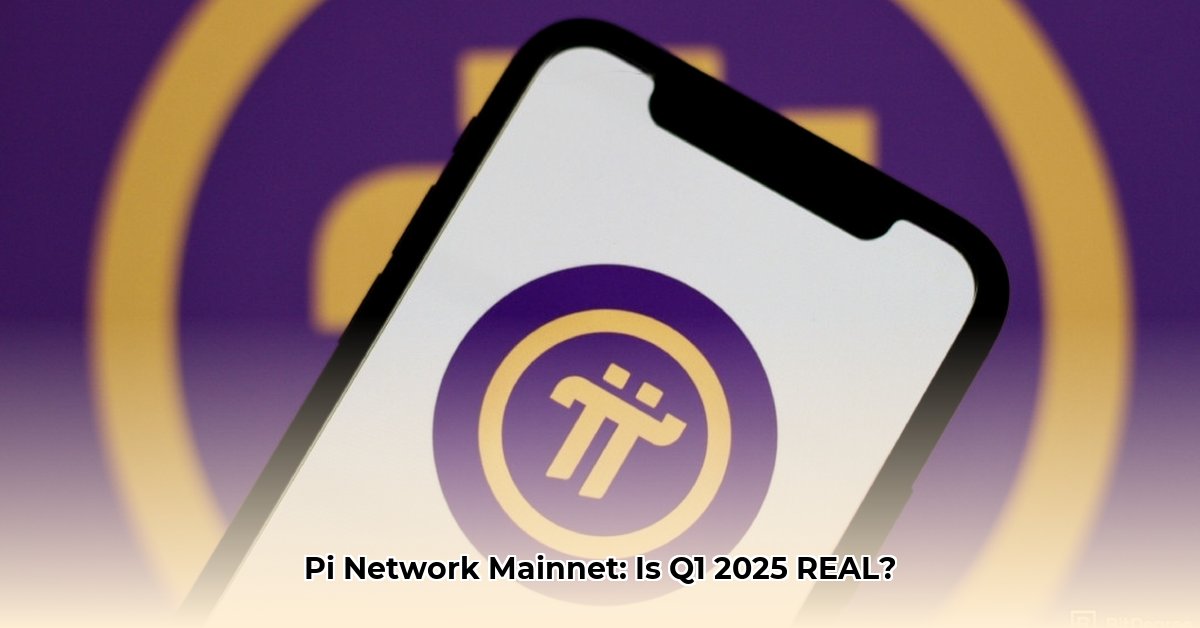
The anticipated Pi Network mainnet launch, scheduled for Q1 2025, marks a pivotal moment for the project. This comprehensive review examines the key milestones, potential risks, and actionable strategies for various stakeholders, providing a balanced perspective on this significant event in the cryptocurrency landscape. The launch presents both opportunities and challenges, demanding careful consideration from users, developers, and regulators alike.
Milestones Reached and Challenges Ahead
Pi Network has achieved notable milestones, surpassing its initial KYC (Know Your Customer) verification target of 15 million users, reaching over 18 million. However, only approximately 8 million users have migrated their Pi to the mainnet, falling short of the projected 10 million target. This shortfall presents a significant challenge, potentially impacting the launch's overall success. The target date, while set for Q1 2025, remains somewhat vague, contributing to prevailing uncertainty. Despite this, over 80 applications are reportedly ready for the mainnet, indicating developer enthusiasm.
Potential Pitfalls: Risks to Consider
Several factors could negatively impact the mainnet launch. These risks require careful assessment:
Mainnet Migration: The insufficient rate of Pi migration to the mainnet poses a substantial risk. Failure to reach the target number of users could lead to delays and erode user confidence.
Regulatory Compliance: The evolving regulatory landscape for cryptocurrencies presents a significant challenge. Pi Network's adherence to KYC and AML (Anti-Money Laundering) regulations, and its integration with cryptocurrency exchanges, will be crucial for its future success. Stricter regulations could limit adoption.
Security Risks: The large user base makes Pi Network a potential target for malicious actors. Robust security measures and regular independent audits are essential to mitigate the risk of security breaches, which could have devastating consequences.
Market Volatility: The inherent volatility of cryptocurrency markets presents a significant unknown. Pi's value upon launch will be entirely subject to market forces, introducing substantial uncertainty.
Actionable Strategies for Key Stakeholders
Successful navigation of the mainnet launch requires proactive strategies from all stakeholders:
| Stakeholder | Short-Term Priorities | Long-Term Strategies |
|---|---|---|
| Pi Network Team | Accelerate mainnet migration, address KYC bottlenecks, improve governance transparency. | Maintain network stability, foster a strong developer community, secure strategic partnerships for growth. |
| Pi Users (Pioneers) | Complete KYC verification, migrate Pi to the mainnet, actively participate in community forums. | Diversify investments, monitor market trends, engage in community governance. |
| Cryptocurrency Exchanges | Assess demand for Pi, evaluate regulatory compliance for listing. | Establish clear listing criteria for new cryptocurrencies, enhance security protocols, effectively manage risks. |
| Government Regulators | Monitor Pi Network's KYC/AML compliance. | Develop clear, adaptable regulations for crypto projects, ensuring compliance with anti-money laundering standards. |
How to Successfully Migrate Your Pi to the Mainnet
Successfully migrating your Pi to the mainnet involves a multi-step process. Understanding these steps and potential challenges is crucial. The migration is akin to a financial move, demanding careful planning and execution.
The Eight Steps to Mainnet Migration
- Open the Pi Browser App: Access the platform.
- Create a Pi Wallet: Secure your digital wallet.
- Complete KYC Verification: This step is vital but can be time-consuming.
- Configure Your Pi Lockup: Choosing a lockup period affects potential returns.
- Initiate the Migration: Begin the transfer process.
- Confirm Your Migration: Verify the transfer is complete.
- 14-Day Pending Period: Allow time for processing.
- Access Your Transferred Pi: Access your migrated Pi coins.
Navigating Potential Challenges and Risk Mitigation
Delays can occur, particularly during KYC verification. The 14-day pending period is another potential source of delay. Securely backing up your wallet passphrase is paramount to prevent irreversible loss of access to your Pi. Consistent monitoring of official Pi Network updates is essential.
Long-Term Considerations
Beyond the migration, long-term engagement with the Pi Network community and a comprehensive investment strategy are vital for maximizing returns. Staying informed about developments and actively participating in the community will help you navigate the evolving landscape of Pi Network.